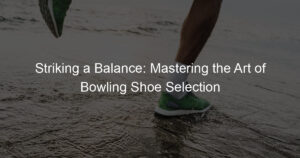
Introduction to Water Shoe Buying Guide
Whether you are a seasoned water sports enthusiast or a casual beach-goer, water shoes are an essential part of your gear. This guide is designed to help you understand why water shoes are necessary and the different types available in the market.
- Why water shoes are essential for water-based activities
- Understanding the different types of water shoes
Water shoes are not just another accessory; they are a necessity for anyone engaging in water-based activities. They offer protection against sharp objects, hot sand, and slippery surfaces. Imagine walking on a rocky beach or a riverbed barefoot. It can be quite uncomfortable and even dangerous. Water shoes provide a protective layer between your feet and the rough terrain, ensuring you can enjoy your activities without worrying about potential injuries.
Not all water shoes are created equal. There are several types to choose from, each designed for specific activities and environments. For instance, water sandals are great for beach activities and casual water sports, while water boots are designed for more intense activities like whitewater rafting. Then there are aqua socks, which are lightweight and perfect for swimming or lounging by the pool. Understanding the different types of water shoes will help you make an informed decision based on your needs and the activities you plan to undertake.
In the following sections, we will delve deeper into the factors to consider when choosing water shoes, top picks in the market, maintenance and care tips, common mistakes to avoid, and case studies to guide your selection process. Stay tuned for a comprehensive guide to finding the perfect fit water shoes for you.
Choosing Water Shoes: Factors to Consider
When it comes to selecting the perfect pair of water shoes, there are several factors to consider. One of the most important aspects to focus on is the fit and comfort of the shoe.
Fit and Comfort
The fit and comfort of your water shoes can greatly impact your overall experience. Let’s delve into why choosing the right size and ensuring a comfortable fit are crucial.
- Importance of choosing the right size
- How to ensure a comfortable fit
Choosing the right size is the first step towards comfort. Shoes that are too tight can cause discomfort and even lead to blisters. On the other hand, shoes that are too loose can slip off, especially in water. According to a study by the American Podiatric Medical Association, 80% of adults have experienced foot pain due to wearing improperly fitted shoes. Therefore, it is essential to choose water shoes that fit perfectly.
Ensuring a comfortable fit goes beyond just choosing the right size. It also involves considering the design and material of the shoe. Look for water shoes with a cushioned insole and a flexible sole that bends with your foot. Additionally, opt for shoes with breathable material to prevent your feet from becoming too hot. Remember, a comfortable shoe enhances your performance and makes your water activities more enjoyable.
Material and Durability
When choosing water shoes, the material and durability are crucial factors to consider. The materials used in the shoes can significantly impact their comfort, performance, and lifespan. Similarly, the durability of the shoes determines how long they will last, especially when used in challenging environments.
- Common materials used in water shoes
- Neoprene: This synthetic rubber is commonly used in water shoes due to its excellent water resistance and flexibility. It’s also very durable and provides good insulation, making it ideal for colder waters.
- Mesh: Mesh is often used in the upper part of water shoes. It’s lightweight and breathable, allowing water to drain quickly and air to circulate, keeping your feet dry and comfortable.
- Rubber: Rubber is typically used for the soles of water shoes. It provides excellent traction, even on slippery surfaces, and is also very durable.
- How to assess the durability of water shoes
- Check the materials: As mentioned above, some materials are more durable than others. For example, neoprene and rubber are known for their durability.
- Look at the construction: Shoes that are well-constructed will generally last longer. Look for features like reinforced stitching and high-quality soles.
- Read reviews: Other customers’ experiences can give you a good idea of how durable the shoes are. Look for reviews that mention how the shoes held up over time.
Water shoes are typically made from a variety of materials, each with its own set of advantages and disadvantages. Here are some of the most common materials:
Assessing the durability of water shoes can be a bit tricky, but here are some tips to help you:
Remember, the best water shoes are those that can withstand the elements while keeping your feet comfortable and protected. So, take your time to consider the material and durability when choosing your water shoes.
Traction and Support
When it comes to choosing water shoes, two factors that should never be overlooked are traction and support. These elements play a significant role in your safety and comfort while engaging in water activities.
- Why traction is crucial in water shoes
- How to evaluate the support provided by water shoes
- Arch Support: Check if the shoe provides adequate support to the arch of your foot. This is particularly important if you plan to be on your feet for extended periods.
- Heel Cup: A good water shoe should have a firm heel cup to hold your heel in place and provide stability.
- Cushioning: Look for shoes with good cushioning to absorb shock and protect your feet from hard surfaces.
Traction is the grip your shoes provide on wet and slippery surfaces. Imagine walking on a wet, slippery rock without any grip on your shoes – sounds dangerous, right? That’s why traction is crucial in water shoes. It helps prevent slips and falls, ensuring your safety during water activities. According to a study by the National Safety Council, slips and falls account for approximately 8.9 million emergency department visits each year. With the right water shoes, you can significantly reduce the risk of such accidents.
Support in water shoes refers to the level of comfort and stability they provide to your feet. Good support can help prevent foot fatigue and discomfort, especially during prolonged water activities. When evaluating the support of water shoes, consider the following factors:
In conclusion, both traction and support are vital factors to consider when choosing water shoes. They not only enhance your comfort but also ensure your safety during water activities. Remember, the best water shoes are those that provide excellent traction and support while fitting comfortably.
Best Fit Water Shoes: Top Picks
Let’s dive into the top picks for the best water shoes. We’ve researched and tested various brands to bring you the top three that offer comfort, durability, and style.
-
Review of Top Water Shoe Brand 1: Aqua Sphere
Aqua Sphere is a brand known for its innovative designs and high-quality materials. Their water shoes are no exception. The Aqua Sphere Beachwalker XP is a top pick due to its superior comfort and excellent grip on wet surfaces.
Pros Cons Comfortable fit May run small in size Excellent grip Not suitable for rocky terrains -
Review of Top Water Shoe Brand 2: Speedo
Speedo is a well-known brand in the world of water sports. Their Surfwalker Pro 3.0 water shoes are lightweight and quick-drying, making them perfect for beach or pool use.
Pros Cons Lightweight Not ideal for long walks Quick-drying Less durable -
Review of Top Water Shoe Brand 3: Crocs
Crocs, famous for their comfortable and versatile footwear, also offer excellent water shoes. The Crocs Swiftwater Mesh Water Shoe is breathable, easy to clean, and provides good traction on wet surfaces.
Pros Cons Breathable Less stylish Easy to clean May feel loose on narrow feet
Remember, the best water shoe for you depends on your specific needs and activities. Consider the factors we discussed earlier when making your decision.
Water Shoe Tips: Maintenance and Care
Water shoes are a valuable investment for those who love water activities. To ensure they serve you well and last long, they require proper care and maintenance. Here are some tips on how to clean and dry your water shoes and prolong their lifespan.
- How to Clean and Dry Water Shoes
- Rinse your shoes thoroughly with fresh water.
- Use a soft brush and mild soap to scrub the inside and outside of the shoes. Avoid harsh detergents as they can damage the material.
- Rinse off the soap completely.
- To dry, place the shoes in a well-ventilated area away from direct sunlight. Direct heat can cause the shoes to shrink or warp.
- Ensure the shoes are completely dry before storing them to prevent mold and mildew growth.
- Tips for Prolonging the Lifespan of Water Shoes
- Proper Storage: Store your water shoes in a cool, dry place. Avoid stuffing them in a bag or box where they can’t breathe.
- Regular Cleaning: Clean your shoes after each use to prevent dirt and sand from causing wear and tear.
- Avoid Harsh Conditions: While water shoes are designed for water use, they’re not meant to withstand extreme conditions. Avoid using them on rough terrain or in very hot conditions.
- Rotate Your Shoes: If you frequently engage in water activities, consider having more than one pair of water shoes. Rotating them can help prolong their lifespan.
After each use, it’s essential to clean your water shoes to remove any dirt, sand, or pebbles that may have gotten inside. Here’s a simple step-by-step guide:
With proper care, your water shoes can last for several seasons. Here are some tips to help prolong their lifespan:
Remember, water shoes are designed to protect your feet in wet conditions. By following these maintenance and care tips, you can ensure they continue to do their job effectively for a long time.
Selecting the Right Water Shoe: Common Mistakes to Avoid
Choosing the right water shoe can be a tricky task. It’s easy to make mistakes that could lead to discomfort or even injury. Let’s take a look at some of the most common mistakes people make when selecting water shoes, and how you can avoid them.
- Mistake 1: Choosing the wrong size
- Mistake 2: Ignoring the shoe material
- Mistake 3: Overlooking the importance of traction
One of the most common mistakes is choosing the wrong size. A shoe that is too small can cause discomfort, blisters, and even foot pain. On the other hand, a shoe that is too large can slip off, potentially leading to accidents. Always ensure you measure your foot accurately and refer to the manufacturer’s sizing chart before making a purchase.
Water shoes are designed to be worn in wet conditions, so the material they’re made from is crucial. Some materials can absorb water, making the shoes heavy and uncomfortable. Others may not dry quickly, leading to unpleasant odors. Always look for water shoes made from quick-drying, breathable materials.
Water shoes are often used on slippery surfaces, so traction is key. Shoes without enough grip can lead to slips and falls. Always check the sole of the shoe for a good tread pattern that will provide grip on wet surfaces.
By avoiding these common mistakes, you can ensure that you select a water shoe that is comfortable, durable, and safe. Remember, the right shoe can make all the difference in your water-based activities.
Water Footwear Selection: Case Studies
Let’s take a look at two real-life examples to understand the importance of selecting the right water shoes. These case studies will help you make a more informed decision when buying your next pair of water shoes.
- Case Study 1: Successful Selection of Water Shoes
- Case Study 2: Lessons Learned from a Poor Water Shoe Selection
Meet John, an avid hiker who loves to explore trails with water crossings. John understood the importance of good water shoes and did his research before buying a pair. He considered the factors like the shoe’s material, fit, grip, and drainage capabilities. He ended up choosing a pair of water shoes with a mesh upper for quick drying, a snug fit to prevent blisters, and a sturdy rubber sole for excellent grip on slippery surfaces.
John’s water shoes served him well on his hiking trips. They kept his feet comfortable and dry, and he didn’t slip on the wet rocks. This case study shows the benefits of investing time and effort in selecting the right water shoes.
Now, let’s talk about Sarah, a beach enthusiast. Unlike John, Sarah made a quick decision and bought a pair of water shoes without much thought. She chose a pair that looked stylish but didn’t consider other important factors.
During her beach vacation, Sarah’s shoes took a long time to dry, causing discomfort. The fit was also loose, leading to blisters. Moreover, the sole didn’t provide enough grip, making her slip a few times. Sarah’s experience highlights the problems one can face with a poor water shoe selection.
These case studies underline the importance of careful selection when buying water shoes. Remember, the right pair of water shoes can enhance your water-based activities, while a poor choice can lead to discomfort and even injury.
| Key Takeaways |
|---|
| Consider factors like material, fit, grip, and drainage when buying water shoes. |
| Invest time in research to ensure you make an informed decision. |
| A poor selection can lead to discomfort and safety issues. |
Perfect Fit Water Shoes: Key Takeaways
As we wrap up our comprehensive guide on water shoes, let’s revisit some of the most important points we’ve covered. These key takeaways will help you make an informed decision when choosing your next pair of water shoes.
- Recap of the importance of fit, material, and traction
- Summary of top water shoe picks
- Final tips for water shoe selection
The fit, material, and traction of your water shoes are critical. A well-fitted shoe ensures comfort and prevents blisters. The material should be quick-drying and breathable to keep your feet dry and comfortable. Traction is essential for safety, especially on slippery surfaces.
We’ve reviewed several top-notch water shoes in this guide. Some of our favorites include the ‘Aqua Swift Water Shoe’ for its excellent traction and ‘Blue Wave Water Shoe’ for its superior comfort and fit. Remember, the best shoe for you depends on your specific needs and activities.
When selecting water shoes, consider the activity you’ll be doing. For water sports, look for shoes with good traction and toe protection. For beach use, opt for lightweight and quick-drying shoes. Always try on shoes with the same type of socks you’ll be wearing to ensure a perfect fit.
In conclusion, the right water shoes can significantly enhance your comfort and safety during water-related activities. By considering the fit, material, and traction, and by reviewing our top picks, you’re well on your way to finding the perfect pair. Happy shopping!
Water Shoe Selection Wisdom: Conclusion
As we wrap up our comprehensive guide on water shoe selection, let’s revisit some key points and provide some final thoughts to aid you in your journey to finding the perfect pair.
- Final thoughts on choosing the right water shoes
- Encouragement for the reader to make an informed water shoe selection
Choosing the right water shoes is not just about style or color, but more importantly, it’s about comfort, fit, and functionality. Remember, the best water shoes are those that meet your specific needs, whether you’re kayaking, hiking, or just strolling along the beach. Don’t forget to consider factors such as material, design, and durability when making your selection.
We encourage you to take your time and make an informed decision when selecting your water shoes. Use the knowledge you’ve gained from this guide to evaluate your options and choose wisely. Remember, a well-informed decision now can save you discomfort and money in the future. So, go ahead, take that step, and find your perfect pair of water shoes!
In conclusion, the journey to finding the perfect water shoes can be as exciting as the adventures you’ll embark on with them. With the right knowledge and a little patience, you’re well on your way to making a wise and informed water shoe selection. Happy shopping!









